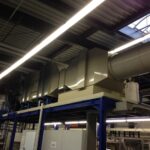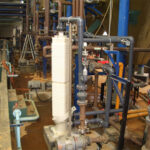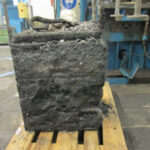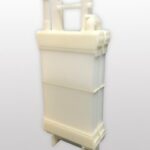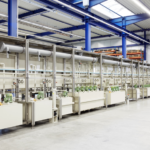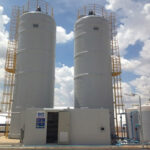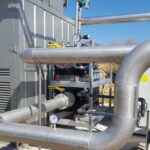Case study no. 19:
Redox flow battery
Initial situation
When used as a redox flow battery, vanadium is dissolved in sulphuric acid, where it has four different oxidation states. The positive and negative electrolyte is stored in two tanks and pumped to the galvanic cell, which is divided by a membrane, for charging and discharging as required. The actual chemical redox reaction takes place in this cell, in which one part of the vanadium is reduced and the other is oxidized.
In addition to a current flow and a voltage of approx. 1.4 V at 30°C, this results in heat losses that are fed into the system.
Task definition
The vanadium redox flow electrolyte is a very oxidation-friendly, temperature-sensitive system. Both the longevity of the electrolyte and the best operating point must be guaranteed. Metallic foreign ions must also be avoided to ensure the purity of the system.
Solution
All types of plastic heat exchangers can be used to cool the electrolyte.
– as a Immersion-Type heat exchanger in the energy storage tanks to maintain the required temperature.
– as a liquid/liquid heat exchanger (tube plate exchanger or tube bundle exchanger) in the pipelines from the tanks to the cells.
– as a liquid/air (gas/water exchanger), which is installed in the housing of a complete system.
Individual solutions depend on customer preferences, environmental conditions and legal requirements.
Result
Redox-Flow batteries can be used worldwide even under severe external conditions if they can be tempered with the aid of a Calorplast heat exchanger. Thanks to the plastic, there are no foreign ions in the electrolyte and the heat exchange can also take place without corrosion and with low maintenance.



